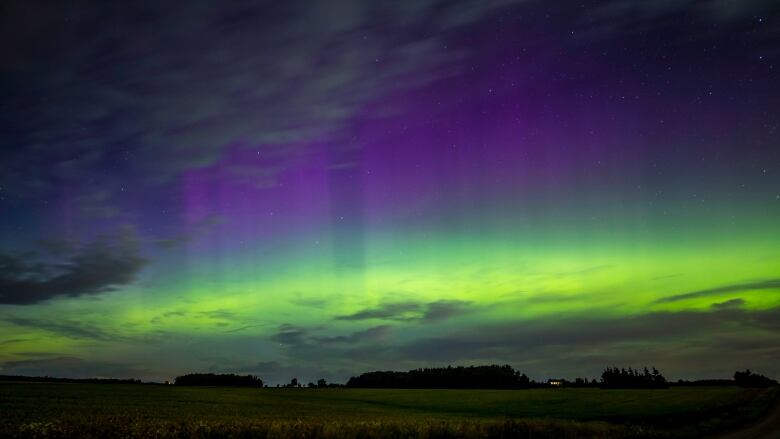Heads up! Chance to see northern lights again this weekend
People around the world witnessed a display Thursday night despite bright moon

After a spectacular display of northern lights Thursday night, there's a chance of more this weekend.
The U.S. Space Weather Prediction Center(SPWC) issued a strong geomagnetic storm watch for late Wednesday into Thursday. While Wednesday's display wasn't quite so strong, the second hit Earth directly, resulting in dancing lights across the sky.
The initial watch was issued after the sun released a fast-moving stream of particles, called a coronal mass ejection (CME), on Monday.
A second watch, followed by a warning, was issued on Thursday after the sun released an X9.3 solar flare, the strongest since 2006. It was followed by a second measuring X2.2. Both released a CME that hurtled towardEarth. The particles then interacted with our magnetosphere, producing the display.

Canada sits in a favourable latitude for observingthe northern lights. While the phenomena are seen most often near the Arctic, even moderate geomagnetic storms can be visible in lower latitudes fairly regularly, depending on the sun's activity.
Thursday's storm was so strong that it stretched down into the United States. It subsided on Friday, but then spiked once again briefly in the morning.
The Space Weather Prediction Centeris forecasting severe geomagnetic storms into Friday, with strong storms continuing on the weekend.
For the best chance to see the lights, head to a dark location and look north. You can try photographing them with a DSLRon a tripod by taking a 15- to 20-second exposure with the focus set on infinity or a distant object.
For an update on the chances of seeing the northern lights, you can visit the Space Weather Prediction Center's 30-minute forecast.












_(720p).jpg)


 OFFICIAL HD MUSIC VIDEO.jpg)
.jpg)



























































































